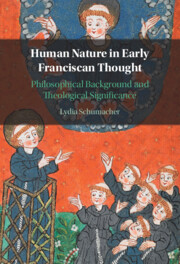The Franciscan Antonio Daza, a native of Valladolid, published his Historia de las llagas de nuestro seráfico padre San Francesco in 1617. He intended to demonstrate that the stigmata of Francis of Assisi were miraculous and unique. Daza referred to Juana de la Cruz (d. 1534), a Poor Clare, whom he identified as providing evidence of the veracity of Francis's stigmata in her sermons, which had been collected by one of the nuns in her convent in a manuscript known as El Conhorte. Juana's sermons were defended as divinely inspired and thus her defence of the miracle of Francis's stigmata was regarded as based on information received directly from God. Yet Juana herself had, according to another work by Daza, the Historia, vida y milagros, éxtasis y revelaciones de la bienaventurada virgen Santa Iuana de la Cruz (first published in 1610) received painful marks on her hands and feet in 1524. This paper will consider the tensions evidenced in Daza's work and his tactics in attempting to demonstrate the unique nature of the stigmata of Francis of Assisi whilst at the same time apparently acknowledging a similar miracle experienced by Juana de la Cruz.



